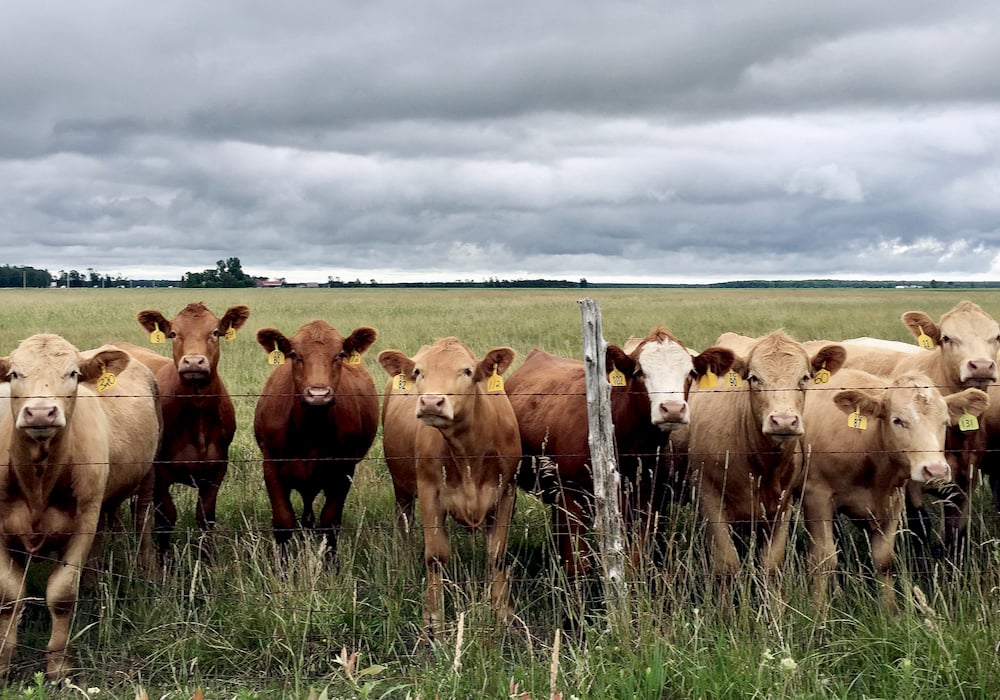Fight continues toward elimination of non-tariff barriers in beef processing

The strike at Cargill’s Dunlop processing facility might finally be over and the beef sector now wants improve access to processing and obtain risk insurance against future disruptions.
Read Also
Opinion: What’s in a name?
Barbecue season is in full swing and most Canadians take advantage of warmer weather to cook meals outside. It keeps…
There is no good time for a strike, said Jim Clark, executive director of the Ontario Cattle Feeders Association and Ontario Corn Fed Beef. However, the labour dispute aligned with tight cattle numbers and warmer weather, providing producers with some latitude in cattle retention.
“We were getting to a critical factor (at week five) just in the fact cattle need to continually move,” he said.
Why it matters: A 41-day strike at the Cargill Dunlop beef processing plant in Guelph highlighted vulnerabilities within processing and regulations that hinder cattle movement and exports.
Canadian Cattle Association president Nathan Phinney said disruptions to supply chain-reliant industries like beef, whether processing, port or rail strikes or natural disasters, requires thoughtful mitigation strategies, especially in an integrated North American system.
Clark said local facilities like St. Helen’s Meat Packers and Norpac Beef worked together to offset backlogs, and while some cattle went to Cargill’s High River, Alta., facility or south, it wasn’t an optimum process.
Concerns weren’t limited to cattle movement and processing. There was no shortage of boxed beef in the marketplace but Ontario Corn Fed Beef relies heavily on St. Helen’s and Cargill for its export markets, especially Japan.
“For us, it was getting tight. We’re starting to get very nervous with our Japanese customers,” said Clark.
“It’s that time of year where there’s a lot of functions happening, barbecue season, and more promotions.”
The strike postponed a Japanese trade mission, and Clark said the post-strike logistics and costs of sea freight versus airfreight to ensure timely product delivery to overseas clients weighed heavily.
He foresees higher numbers of Ontario-fed cattle shipped south to fill capacity at new processing facilities in the United States. He also anticipates growth of the province’s feedlot sector in the next decade, driven largely by improvements in crossbreeding dairy-on-beef.
He believes investment in provincial processing and retention of current federal facilities is sufficient for the current herd size.
“As a free market industry, we need to consider our options as well to protect those within the sector,” he said. “Today (it) was a strike. Before, we had COVID, we had BSE. There’s always that looming ‘what’s next?’ As an industry, we need to continue to push forward with marketable insurance programs and programs that help offset some risk.”
Clark said he appreciates risk management and AgriStability programs, but given farming is a big business requiring significant producer investment, an extra form of risk mitigation is needed to offset financial impact from disruptions.
“We need some form of risk insurance, in the event of any type of crisis, that kicks in to help offset the risk side of it,” he said. “We’ve got so many dollars on the table now. When I look at it, it often looks like a lot of people walking the high rope with no safety net underneath them.”
The Cargill strike provided a solid argument for such a program, highlighting the effect on producers and on value chain limitations. As well, border issues can hinder preferred shipping destinations.
“East to west sometimes isn’t the best option. North to south is, and there are regulations still in place (hindering cattle movement),” said Phinney.
For example, the South Korean import tariff regime disqualifies United States-slaughtered Canadian cattle.
As well, specified risk material removal rules are not harmonized with those in the U.S. After Canada received negligible risk status for BSE, there was optimism that harmonization would quickly follow.
“(SRM) is the biggest challenge because it is the biggest burden and cost on our abattoirs and plants,” said Phinney, suggesting it also hinders processing expansion.
“It has added cost here to our processors. They’re at a disadvantage when it comes to competitiveness to the U.S.”
Phinney acknowledged ongoing Canadian Food Inspection Agency communications and diligent work by the Beef Cattle Research Council and chief veterinary officers to craft a document now under peer review, but it hasn’t crossed the finish line.
Cattle herds in Canada and the U.S. have shrunk to their lowest levels after several years of drought, and given the integral role cattle play in keeping critical plant infrastructure viable, Phinney said it is critical to level the competitive field.
“It is imperative to make sure this gets done in a timely fashion, and sooner rather than later, so we can strengthen ourselves going forward and be positioned to grow our industries,” said Phinney.
Source: Farmtario.com

